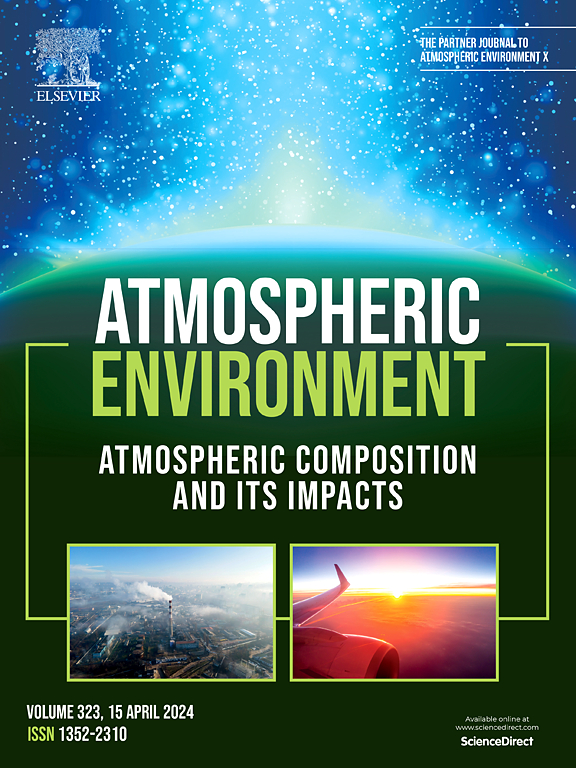丹麦护士队列研究中长期暴露于空气污染与肺癌发病率的关系
IF 3.7
2区 环境科学与生态学
Q2 ENVIRONMENTAL SCIENCES
引用次数: 0
摘要
虽然空气污染和肺癌之间的联系已经确立,但最近来自低污染地区的证据喜忧参半。我们调查了丹麦长期暴露于空气污染与肺癌发病率的关系。方法我们分析了丹麦护士队列中28,731名女护士的数据,从1993/1999年到2020年随访肺癌发病率。我们使用DEHM/UBM/AirGIS建模系统估算了住宅颗粒物(PM10和PM2.5)、二氧化氮(NO2)、黑碳(BC)和臭氧(O3)的年平均浓度。时变Cox回归模型评估了这些暴露与肺癌发病率之间的关系。在排除了不符合研究标准的参与者后,我们还剩下23,706名参与者,其中450人在研究期间患上了肺癌。参与者基线地址的PM2.5、PM10、NO2、BC和O3平均浓度分别为14.65、21.02、20.25、0.92和50.77 μg/m3。我们的研究没有发现所调查的污染物与肺癌发病率之间的联系。在完全调整模型中,PM2.5、PM10、NO2、BC和O3 5年移动平均暴露量与肺癌发病率的风险比(HRs)和95%可信区间分别为0.95 (0.75 ~ 1.20)/ 2.68 μg/m3、0.93 (0.78 ~ 1.12)/ 2.81 μg/m3、0.95 (0.83 ~ 1.08)/ 7.98 μg/m3、0.96 (0.86 ~ 1.08)/ 0.34 μg/m3和1.05 (0.90 ~ 1.21)/ 7.04 μg/m3。这些发现在各种统计模型和敏感性分析中都是稳健的。我们发现长期空气污染暴露与丹麦女护士肺癌发病率之间没有关联,这与在其他环境中建立的联系形成对比,但与最近在低暴露环境中的研究一致。本文章由计算机程序翻译,如有差异,请以英文原文为准。
Long-term exposure to air pollution and lung cancer incidence in the Danish Nurse Cohort study
Background
Although the link between air pollution and lung cancer is well established, recent evidence from low-pollution areas is mixed. We investigated the association of long-term exposure to air pollution with lung cancer incidence in Denmark.
Methods
We analyzed data from 28,731 female nurses in the Danish Nurse Cohort, followed from 1993/1999 until 2020 for lung cancer incidence. We estimated residential annual mean concentrations of particulate matter (PM10 and PM2.5), nitrogen dioxide (NO2), black carbon (BC), and ozone (O3) using the DEHM/UBM/AirGIS modelling system. Time-varying Cox regression models evaluated the associations between these exposures and lung cancer incidence.
Results
After excluding participants who did not meet the criteria for our study, we were left with 23,706 participants, 450 of whom developed lung cancer during the study period. The mean PM2.5, PM10, NO2, BC, and O3 concentrations at the participants' baseline addresses were 14.65, 21.02, 20.25, 0.92, and 50.77 μg/m3, respectively. Our study found no association between the pollutants investigated and lung cancer incidence. Hazard ratios (HRs) and 95 % confidence intervals for lung cancer incidence associated with 5-year moving average exposures to PM2.5, PM10, NO2, BC, and O3 were 0.95 (0.75–1.20) per 2.68 μg/m3, 0.93 (0.78–1.12) per 2.81 μg/m3, 0.95 (0.83–1.08) per 7.98 μg/m3, 0.96 (0.86–1.08) per 0.34 μg/m3, and 1.05 (0.90–1.21) per 7.04 μg/m3, respectively, in the fully adjusted model. These findings were robust across various statistical models and sensitivity analyses.
Discussion
We found no association between long-term air pollution exposure and lung cancer incidence in Danish female nurses, contrasting with established links in other contexts but aligning with recent studies in low-exposure settings.
求助全文
通过发布文献求助,成功后即可免费获取论文全文。
去求助
来源期刊

Atmospheric Environment
环境科学-环境科学
CiteScore
9.40
自引率
8.00%
发文量
458
审稿时长
53 days
期刊介绍:
Atmospheric Environment has an open access mirror journal Atmospheric Environment: X, sharing the same aims and scope, editorial team, submission system and rigorous peer review.
Atmospheric Environment is the international journal for scientists in different disciplines related to atmospheric composition and its impacts. The journal publishes scientific articles with atmospheric relevance of emissions and depositions of gaseous and particulate compounds, chemical processes and physical effects in the atmosphere, as well as impacts of the changing atmospheric composition on human health, air quality, climate change, and ecosystems.
 求助内容:
求助内容: 应助结果提醒方式:
应助结果提醒方式:


